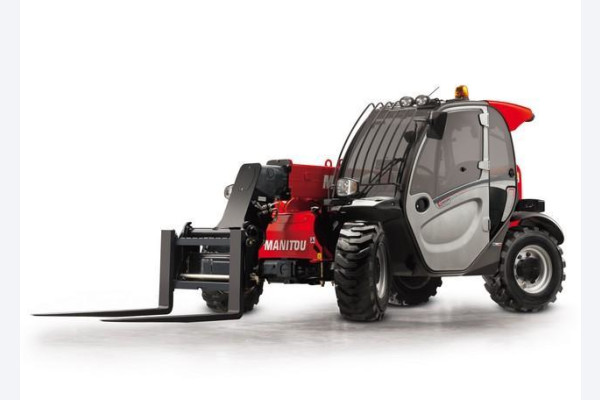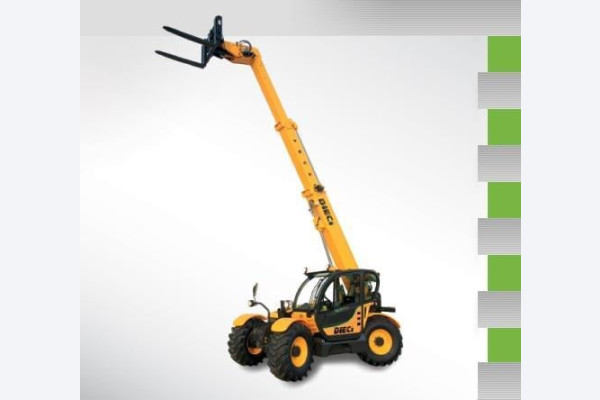Telehandler rental

Kramer 1445

Kramer 1245

Manitou MT 625 T Comfort

Kramer 2706

Manitou MT 420 H

Merlo EW 25.5-90

Merlo Panoramic P 25.6 L

Merlo P 27.6 PLUS Stage V

Merlo P 27.6

Merlo P 27.6 PLUS

Sany STH1440E

Dieci Agri Star 38.10

Merlo TF 30.9 L G

Merlo TF 33.7 L G
Filter
What is the right telehandler for my project?
Telehandlers, also known as telescopic handlers, are incredibly versatile machines that can be a game-changer on your construction site. They combine the reach and lifting power of a crane with the maneuverability of a forklift, making them ideal for various tasks like lifting materials, placing trusses, and using as a working platform. Their versatility and fit with a wide range of attachments makes them a welcomed addition to most job sites.
The rentmas platform offers a comprehensive selection of telehandlers to meet diverse project requirements. From compact to heavy-duty models, the rentmas fleet of fixed and rotating telehandlers ensures versatility across different job sites. With lift heights ranging from 6 to 46 meters and load capacities from 1,200 to 23,000 kilograms, you can choose the best machine to handle your project’s operational needs. Additionally, options for specialized features such as telescopic booms and rough terrain capabilities further enhance your options of adaptability to different project demands.
Fixed telehandlers
Fixed telehandlers are the champions of heavy lifting on construction sites. Their lack of rotation is a trade-off for unmatched stability, exceptional lifting capacity, and a simpler, more cost-effective design.
Some typical applications
- Loading and unloading materials: lifting and placing pallets of construction materials, steel beams, and other bulky items
- Use as a work platform for various applications at height
- Supporting construction tasks: picking up and moving bulk materials
Ideal areas of use
- Material handling: loading and unloading of agricultural materials, heavy pallets of bricks, concrete blocks, or other construction materials
- Feeding equipment: the fixed boom ensures precise positioning when loading materials into concrete mixers or other high-reaching equipment
- Structural support: lifting and placing prefabricated building elements, trusses, or roof beams
- Use as a work platform: The flexibility in lifting height and width of these machines makes them particularly suitable as a work platform in combination with a work basket
What's unique
- Fixed telehandlers offer a rigid structure where the frame and boom move as one unit, translating to unmatched stability when lifting heavy loads and ideal for precise placement tasks like installing trusses or prefabricated elements
- With a simpler design that prioritizes lifting power, fixed telehandlers can typically handle heavier loads compared to their rotating counterparts and often have lower upfront costs
- 3 steering modes that offer the ideal manoeuvrability for every application
Where they’re not suitable
- Without a rotating boom, fixed telehandlers are not suitable for applications that require frequent repositioning or lifting at various heights and angles
Rotating telehandlers
Some typical applications
- On construction sites, rotating telehandlers are used for steel erection, façade installation, roofing, interior work, and demolition and recycling
- In industrial settings: machine loading/unloading, tank and silo maintenance, shipyards, and material handing in confined spaces
Ideal areas of use
- For lifting and placing materials, such as on construction sites
- For maintenance and repair: outdoor areas around infrastructures such as bridges, buildings and roads
- For building and setting up structures: event and concert venues, large and open outdoor festival spaces
What's unique
- The 360-degree rotating cabs offer unmatched versatility in movement, working around angles, and maneuvering over and around obstacles
Where they're not suitable
- Unless equipped with all-terrain capabilities, rotating telehandlers are not designed for operation on rough or unstable terrain
- Tight, confined, or underground workspaces
- Steep inclines
How do I rent a telehandler?
Renting a telehandler on rentmas is done in a few simple steps. Select the type of telehandler you want to rent, along with the location and dates you will need it for. Your search will give back a list of machines in order of shortest distance from the location you selected. If you have certain machine specs you’re looking for, you can use the platform’s filters to narrow down your search.
Once you’ve found the right telehandler, you can finalize your request by providing your billing and project site details. Add more machines to your request, or send your request with a single machine.
Our rental partner will then confirm availability of your requested machine(s). As soon as they approve the rental, you’ll receive an invoice from us and can pay the rental fee using your preferred method: bank transfer, credit card, Stripe, or SEPA Direct Debit.
Important considerations and safety requirements
- Training: Every operator should go through the appropriate training for use of the telehandler they intend to operate, as well as complete any required certifications
- Maintenance: Regular maintenance and inspection of the telehandler is essential to ensuring operational safety on the job site
- Working environment: Consider environmental conditions such as weather, ground conditions and size of any interior spaces
- Safety equipment: Always wear the prescribed protective equipment, including helmet and safety harness
- Load limits: Observe the specified load limits for each telehandler
Choosing the right telehandler depends on the requirements of your project. If you have any questions or uncertainties, don’t hesitate to contact us. We’re here to provide you with the knowledge you need to match the right telehandler to your project’s needs.
